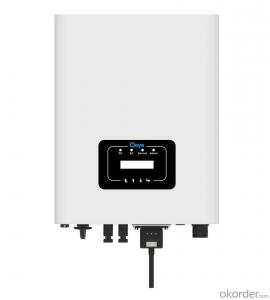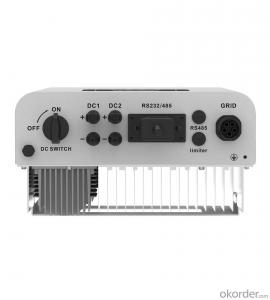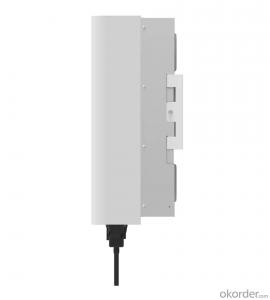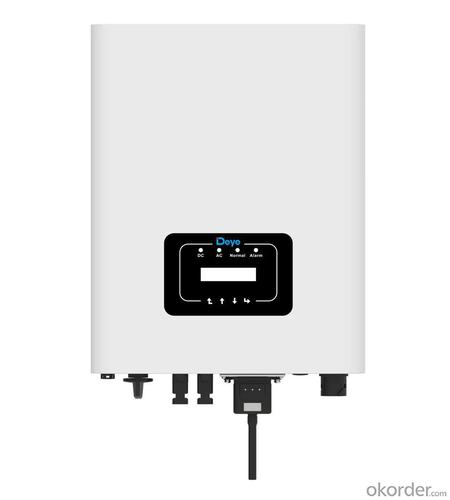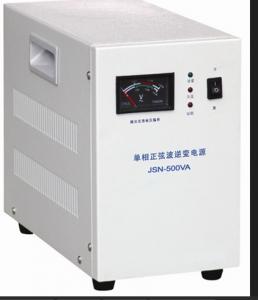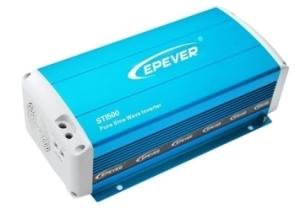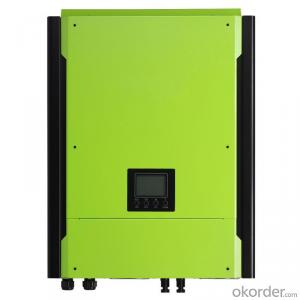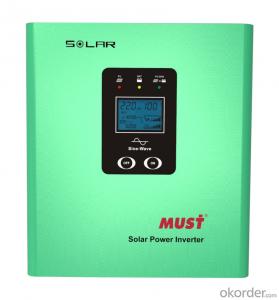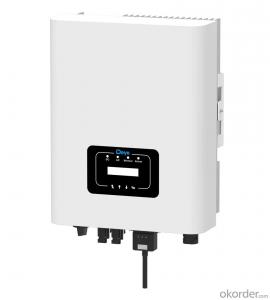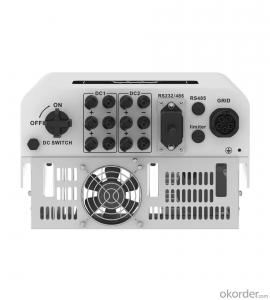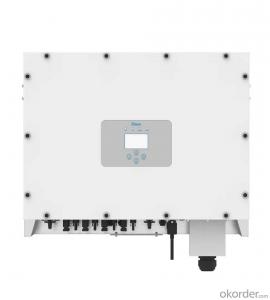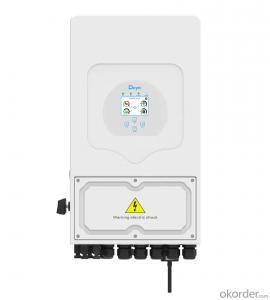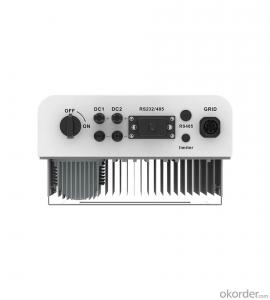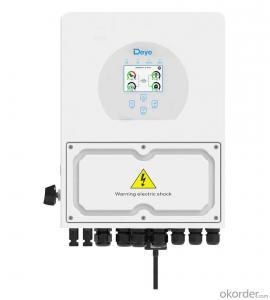SPD for Solar Inverter - Sun-4/5/6/7/8/10/12k-G05 | 4-12kW | Three Phase | 2 MPPT
- Loading Port:
- Ningbo
- Payment Terms:
- TT OR LC
- Min Order Qty:
- 100 pc
- Supply Capability:
- 5000 pc/month
OKorder Service Pledge
OKorder Financial Service
You Might Also Like
Specification
| Technical Data | |||||||||
| Model | SUN-4K-G05 | SUN-5K-G05 | SUN-6K-G05 | SUN-7K-G05 | SUN-8K-G05 | SUN-10K-G05 | SUN-12K-G05 | ||
| Input Side | |||||||||
| Max. DC Input Power (kW) | 5.2 | 6.5 | 7.8 | 9.1 | 10.4 | 13 | 15.6 | ||
| Max. DC Input Voltage (V) | 1000 | ||||||||
| Start-up DC Input Voltage (V) | 140 | 250 | |||||||
| MPPT Operating Range (V) | 120~850 | 200~850 | |||||||
| Max. DC Input Current (A) | 13+13 | ||||||||
| Max. Short Circuit Current (A) | 19.5+19.5 | ||||||||
| No.of MPP Trackers | 2 | ||||||||
| No.of Strings per MPP Tracker | 1 | ||||||||
| Output Side | |||||||||
| Rated Output Power (kW) | 4 | 5 | 6 | 7 | 8 | 10 | 12 | ||
| Max. Active Power (kW) | 4.4 | 5.5 | 6.6 | 7.7 | 8.8 | 11 | 13.2 | ||
| Nominal Output Voltage / Range (V) | 3L/N/PE 380V/0.85Un-1.1Un, 400V/0.85Un-1.1Un | ||||||||
| Rated Grid Frequency (Hz) | 50 / 60 (Optional) | ||||||||
| Operating Phase | Three phase | ||||||||
| Rated AC Grid Output Current (A) | 5.8 | 7.2 | 8.7 | 10.1 | 11.6 | 14.5 | 17.4 | ||
| Max. AC Output Current (A) | 6.4 | 8 | 9.6 | 11.1 | 12.8 | 15.9 | 19.1 | ||
| Output Power Factor | 0.8 leading to 0.8 lagging | ||||||||
| Grid Current THD | <3% | ||||||||
| DC Injection Current (mA) | <0.5% | ||||||||
| Grid Frequency Range | 47~52 or 57~62 (Optional) | ||||||||
| Efficiency | |||||||||
| Max. Efficiency | 98.3% | ||||||||
| Euro Efficiency | 97.5% | ||||||||
| MPPT Efficiency | >99% | ||||||||
| Protection | |||||||||
| DC Reverse-Polarity Protection | Yes | ||||||||
| AC Short Circuit Protection | Yes | ||||||||
| AC Output Overcurrent Protection | Yes | ||||||||
| Output Overvoltage Protection | Yes | ||||||||
| Insulation Resistance Protection | Yes | ||||||||
| Ground Fault Monitoring | Yes | ||||||||
| Anti-islanding Protection | Yes | ||||||||
| Temperature Protection | Yes | ||||||||
| Integrated DC Switch | Yes | ||||||||
| Remote software upload | Yes | ||||||||
| Remote change of operating parameters | Yes | ||||||||
| Surge protection | DC Type II / AC Type II | ||||||||
| General Data | |||||||||
| Size (mm) | 330W×457H×185D | 330×457×205 | |||||||
| Weight (kg) | 10 | 11 | |||||||
| Topology | Transformerless | ||||||||
| Internal Consumption | <1W (Night) | ||||||||
| Running Temperature | -25~65℃, >45℃ derating | ||||||||
| Ingress Protection | IP65 | ||||||||
| Noise Emission (Typical) | <30 dB | ||||||||
| Cooling Concept | Natural cooling | ||||||||
| Max. Operating Altitude Without Derating | 2000m | ||||||||
| Warranty | 5 years | ||||||||
| Grid Connection Standard | CEI 0-21, VDE-AR-N 4105, NRS 097, IEC 62116, IEC 61727, G99, G98, VDE 0126-1-1, RD 1699, C10-11 | ||||||||
| Operating Surroundings Humidity | 0-100% | ||||||||
| Safety EMC / Standard | IEC/EN 61000-6-1/2/3/4, IEC/EN 62109-1, IEC/EN 62109-2 | ||||||||
| Features | |||||||||
| DC Connection | MC-4 mateable | ||||||||
| AC Connection | IP65 rated plug | ||||||||
| Display | LCD1602 | ||||||||
| Interface | RS485/RS232/Wifi/LAN | ||||||||
· 2 MPP tracker, Max. efficiency up to 98.3%
· Zero export application, VSG application
· String intelligent monitoring (optional)
· Wide output voltage range
· Anti-PID function (Optional)
SUN-4/5/6/7/8/10/12K-G05 | 4-12KW | Three Phase | 2 MPPT
Higher yields / Safe & Reliable / Smart / User-friendly
This series inverter is specially designed for three-phase PV systems, covering a wide power range of 4kW, 5kW, 6kW, 7kW, 8kW, 10kW, 12kW. With compactness design, it is easy to install and operate. It supports wide AC output voltage to ensure longer working hour.
- Q: Can a solar inverter be used with different types of backup power configurations?
- Yes, a solar inverter can be used with different types of backup power configurations. Solar inverters are designed to convert the DC power generated by solar panels into AC power that can be used in homes or businesses. They can be used with backup power systems such as battery banks, diesel generators, or grid-tied systems with net metering. The inverter's ability to synchronize with different backup power sources allows for efficient and reliable energy supply in various configurations.
- Q: How does a solar inverter handle variations in battery charge levels?
- A solar inverter typically handles variations in battery charge levels by constantly monitoring the charge level of the battery. It adjusts the energy flow from the solar panels to the battery based on its charge level. When the battery charge is low, the inverter increases the energy flow from the solar panels to charge the battery. Conversely, when the battery charge is high, the inverter reduces the energy flow to prevent overcharging. This dynamic control ensures efficient use of the available solar energy and optimal charging of the battery.
- Q: Can a solar inverter be used with different AC voltage systems?
- No, a solar inverter cannot be used with different AC voltage systems. It is designed to convert the DC power generated by solar panels into a specific AC voltage that is compatible with the electrical grid. Using it with a different AC voltage system could lead to compatibility issues and may damage the inverter or the electrical system.
- Q: What is the role of a maximum power point tracker (MPPT) in a solar inverter?
- The role of a maximum power point tracker (MPPT) in a solar inverter is to optimize the energy output of the solar panels by continuously adjusting the operating point to the maximum power point (MPP). It ensures that the solar panels are operating at their highest efficiency, maximizing the conversion of sunlight into usable electrical energy. This helps to extract the maximum power from the solar panels under varying environmental conditions such as shading, temperature changes, and fluctuating solar irradiance, ultimately improving the overall performance and energy yield of the solar inverter system.
- Q: Can a solar inverter be used in areas with high levels of dust or pollution?
- Yes, a solar inverter can be used in areas with high levels of dust or pollution. However, it is important to regularly clean and maintain the inverter to ensure its optimal performance. Dust and pollution can potentially accumulate on the inverter's surface, affecting its efficiency and lifespan. Regular cleaning and maintenance will help mitigate any issues and ensure the inverter continues to function effectively.
- Q: What is the importance of voltage and frequency control in a solar inverter?
- The importance of voltage and frequency control in a solar inverter is crucial for maintaining the stability and reliability of the power output. By regulating the voltage and frequency levels, the inverter ensures that the electricity generated from the solar panels is in sync with the grid requirements. This control is necessary to prevent damage to electrical appliances and equipment, maintain grid stability, and enable seamless integration of solar energy into the existing power system.
- Q: How does a solar inverter affect the overall system efficiency at different temperatures?
- A solar inverter can affect the overall system efficiency at different temperatures by adjusting its operations to optimize performance. At higher temperatures, the efficiency of the inverter may decrease due to increased internal losses and reduced power output. To mitigate this, modern inverters utilize advanced technologies such as maximum power point tracking (MPPT) algorithms to adapt to the changing temperature conditions. These algorithms adjust the operating parameters of the inverter to maximize energy production by maintaining the optimal voltage and current levels. By dynamically responding to temperature changes, a solar inverter can help maintain higher overall system efficiency across a range of temperatures.
- Q: Can a solar inverter be used with different types of energy storage systems?
- Yes, a solar inverter can be used with different types of energy storage systems. Solar inverters are typically designed to convert the direct current (DC) generated by solar panels into alternating current (AC) that can be used to power household appliances and other electrical devices. They can be integrated with various energy storage technologies such as batteries, supercapacitors, and flywheels to store excess energy generated by the solar panels for later use. The compatibility between the solar inverter and the energy storage system may depend on factors such as voltage requirements, capacity, and communication protocols.
- Q: What are the typical efficiency ranges for different types of solar inverters?
- The typical efficiency ranges for different types of solar inverters vary depending on the specific technology and design. However, in general, string inverters have an efficiency range of around 95% to 98%, while microinverters tend to have an efficiency range of about 96% to 99%. On the other hand, central inverters have a wider efficiency range, typically ranging from 95% to 99%. It's important to note that these efficiency ranges can also be influenced by factors such as temperature, load, and design variations among manufacturers.
- Q: How do you choose the right input voltage range for a solar inverter?
- To choose the right input voltage range for a solar inverter, you need to consider the specifications of your solar panels and the requirements of the inverter. You should check the voltage output range of your solar panels and ensure that the inverter's input voltage range is compatible with it. Additionally, consider any potential variations in solar panel output due to factors like temperature and shading. It is advisable to choose an inverter with a slightly higher input voltage range to accommodate any fluctuations and maximize the efficiency of the system.
Send your message to us
SPD for Solar Inverter - Sun-4/5/6/7/8/10/12k-G05 | 4-12kW | Three Phase | 2 MPPT
- Loading Port:
- Ningbo
- Payment Terms:
- TT OR LC
- Min Order Qty:
- 100 pc
- Supply Capability:
- 5000 pc/month
OKorder Service Pledge
OKorder Financial Service
Similar products
Hot products
Hot Searches
Related keywords
